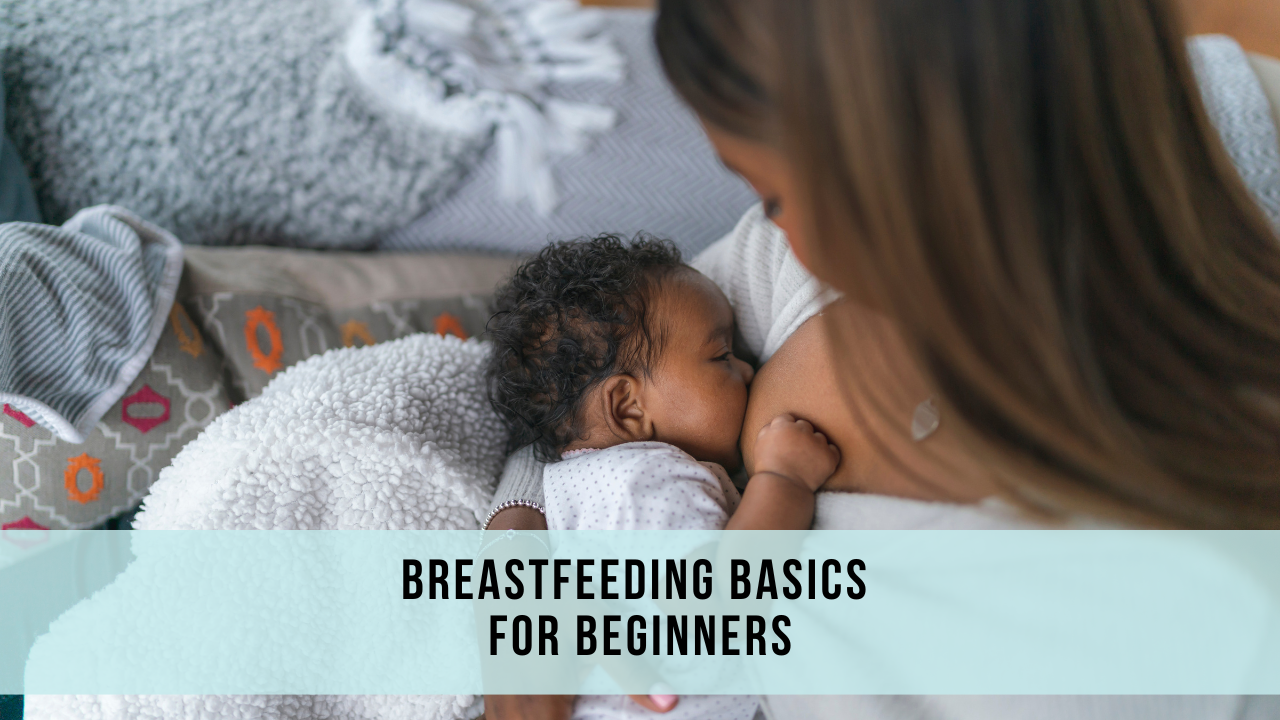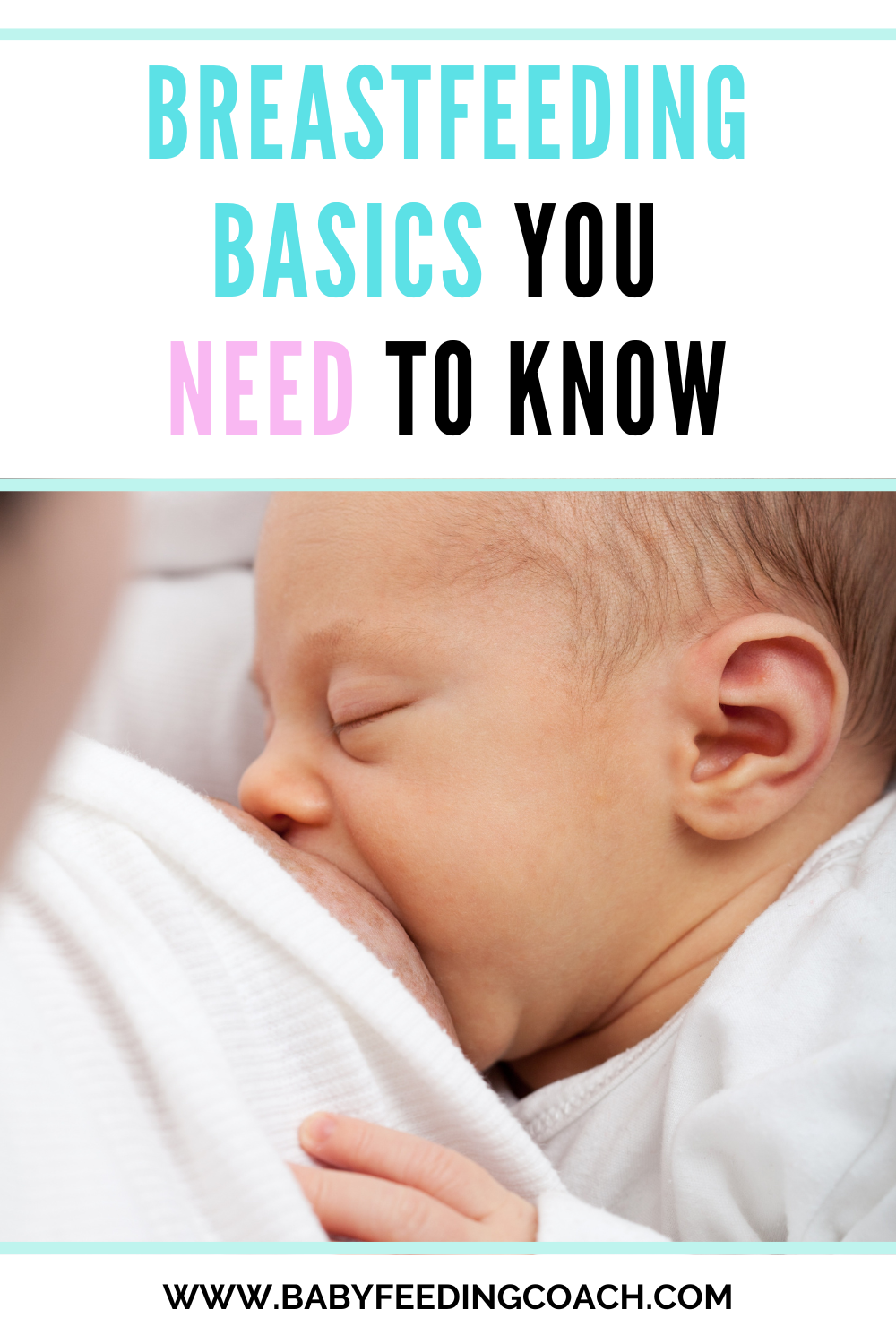Breastfeeding Basics for Beginners
Jan 16, 2023
While breastfeeding comes naturally to some, it is a skill that both you and your baby need to learn.
Figuring it out as you go is hard, but having a solid understanding of breastfeeding can help you in your journey.
Here are some of my best tips and information to get you started:
Breastfeeding Basics #1: Breastmilk takes a few days to come in
During pregnancy, your body starts to prepare for breastmilk.
Milk making tissues grow, making your breasts feel larger and fuller.
After your baby’s birth, the pregnancy hormone will decrease and the lactation hormone will be released. Both the lactation hormone and the baby nursing will signal milk production.
-
Colostrum: This is the first milk that is produced and is a thick, yellowish milk that is rich with nutrients for your newborn in the first hours and days of life.
-
Transitional milk: This is when the mature milk starts to come in and mixes with colostrum. It is triggered by the delivery of the placenta. This is often what people refer to as “your milk coming in” and it usually happens between days 2-5 after birth, but may be later for mothers who had c-sections.
-
Mature milk: This milk is thinner in consistency but still rich in nutrients for your baby. This milk will start to be produced around 5-10+ days after birth. You will notice that mature milk will continue to change to meet the needs of your growing baby.
Remember...breast changes are normal during this time.
You may notice that your breasts feel larger, may leak, baby is producing more wet diapers and baby is taking noticeable gulps while nursing.
These are all great signs that your milk has “come in” and you are transitioning from colostrum to mature milk.
Breastfeeding Basics #2: Breastmilk is (typically) based on supply and demand.
The general rule for breastmilk production is that your body will produce the amount that is equal to what is removed by either your baby or a pump.
As baby nurses more frequently or for longer periods, your body will be triggered to produce more milk. Sometimes it takes a few days for this to happen!
Your baby should be fed on demand, no longer than every 2-3 hours until they get the go-ahead to sleep longer stretches.
This frequent breastmilk removal signals the brain to make MORE.
If you feel like your breastmilk supply is not increasing to meet your baby’s demand, I highly recommend seeking out a lactation professional.
>>> Need to use formula, but still want to protect your milk supply? The Simple Guide to Combination Feeding can help you feel confident with feeding your baby from birth to their first birthday - wherever your feeding journey takes you. <<<
Breastfeeding Basics #3: Your baby should be fed on demand
Your baby will have different feeding needs as they grow.
Newborns do not require a lot of milk but will nurse as frequently as 8-12 times per day.
As your baby grows, their needs will change and they may nurse for longer but go longer between sessions.
While you will often hear to feed your baby every 2-3 hours, I like to change it ever so slightly...
Feed your baby on demand, going no longer than 2-3 hours
So, if your baby is showing you signs that they are hungry, but it has only been 1.5 hours, feed them!
Signs your baby is hungry include:
-
fists moving toward the mouth
-
head turning toward the breast
-
becoming more alert and active
-
sucking on hands
-
opening/closing their mouth.
When you see your child doing these things, feed them as soon as possible. Crying and fussiness are LATE hunger cues and can sometimes make it difficult to nurse.
Nurse until your baby shows signs that they are full, including:
-
unlatching and falling off the breast
-
turning away from the breast and nipple
-
relax and open their fists
I like to limit nursing sessions to 30-40 minutes maximum, though if baby seems unsatisfied or hungry after nursing sessions, it is worth having your baby seen by a lactation professional.
Breastfeeding Basics #4: Signs your baby is eating enough
One of the easiest ways to tell is by what comes out the other end.
The frequency of wet and dirty diapers will show you a lot about how much your baby is taking in.
As a general rule of thumb, your baby should have one or more wet and poopy diapers per day of life they are until your milk supply comes in.
After milk has transitioned away from colostrum, your baby will likely have 6+ wet diapers and poop should transition from dark and sticky to yellow and seedy.
Finally, pay attention to the following:
-
if your baby is satisfied after feedings
-
if your breasts feel softer after a feed
-
if your baby is gaining weight (usually 1 ounce per day)
Breastfeeding Basics #5: What to do if you are separated from baby.
If you are separated from your baby after birth for any reason, there are a couple of different ways you can handle it.
First, you can hand-express milk. You do this by:
-
Place your thumb above the nipple and your fingers below the nipple, at the base of the areola.
-
Press your thumb and fingers back toward the breast, then gently compress your thumb and fingers forward. This should cause milk to drip or squirt.
-
Release the pressure while still holding your breast and continue in a rhythmic pattern.
Hand express into a clean container.
Second, you can use a manual or electric breast pump.
There are many different kinds, but the basics of each are similar to hand-expressing milk.
The breast pump is able to pull the milk out of the breast, usually into a bottle or a bag (depending on the type of pump).
Whether you are removing breastmilk via hand expression or pumping, make sure to feed when your baby would naturally eat, so every 2-3 hours or 8-12 times in 24 hours.
If there is one thing I want you to know is that breastfeeding doesn't come naturally for every woman.
Both you and your baby are learning a new skill and this can be hard!
>>> Most moms need extra guidance during their feeding journey - I'm here to help you feel more comfortable. <<<
>>> Tired of worrying about feeding your baby? Get personalized support so you can enjoy feeding your baby. <<<
Free Resource for Parents and Medical Providers:
The Baby Feeding Database
Helping you understand what formulas are available and narrow down what is best for your family.
This will sign you up for the Baby Feeding Coach email list. I will not spam you. Opt out anytime.








